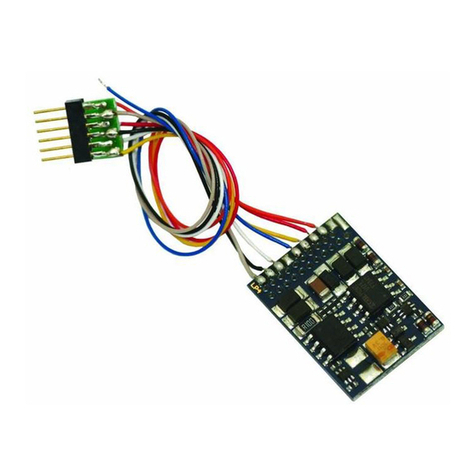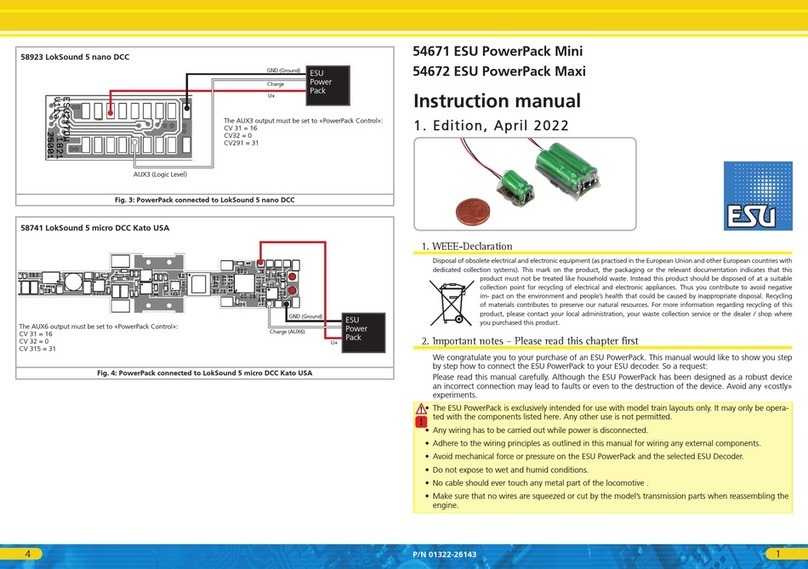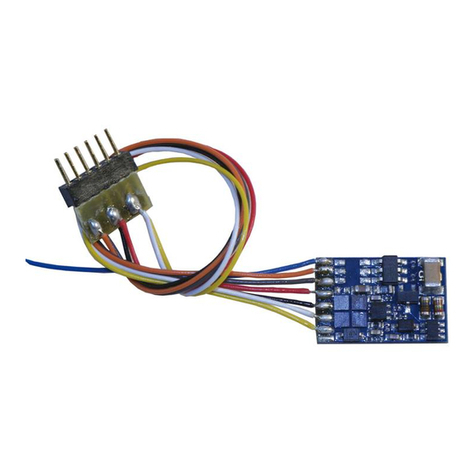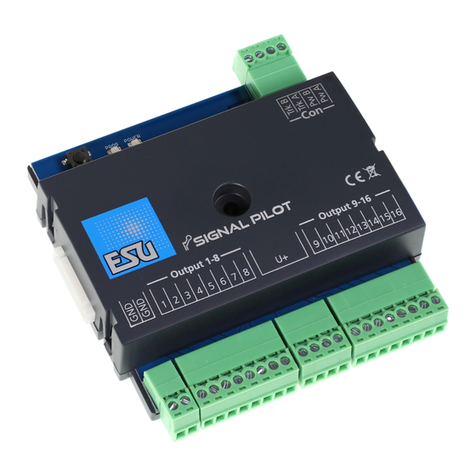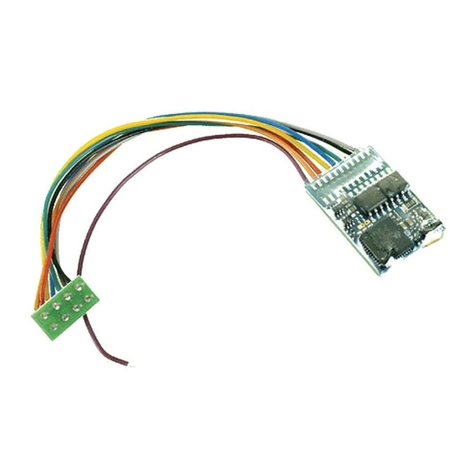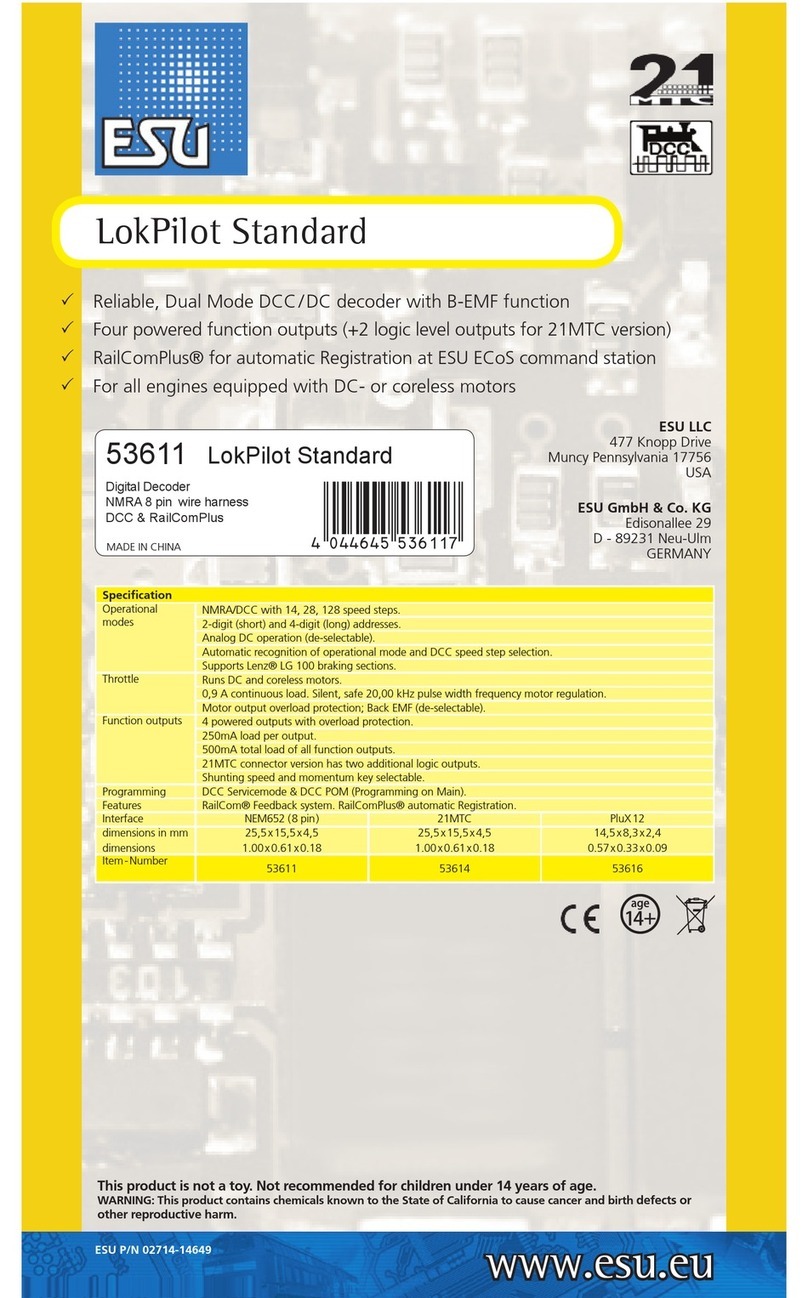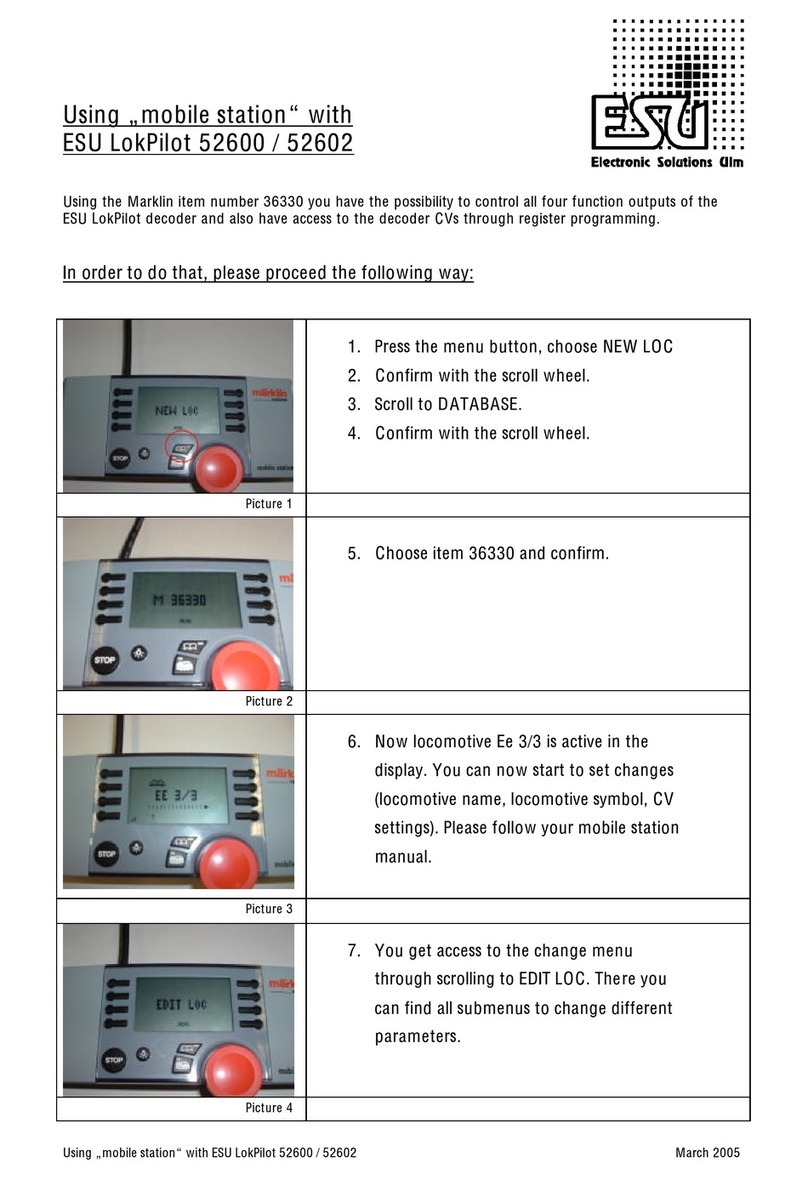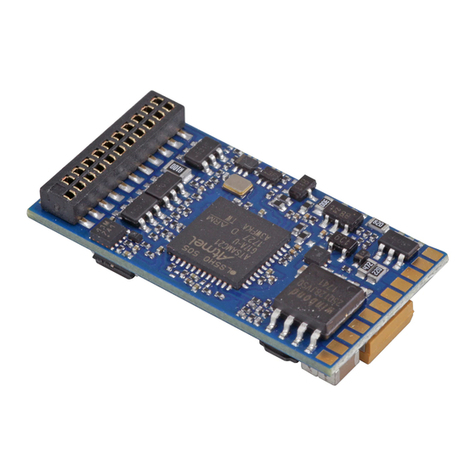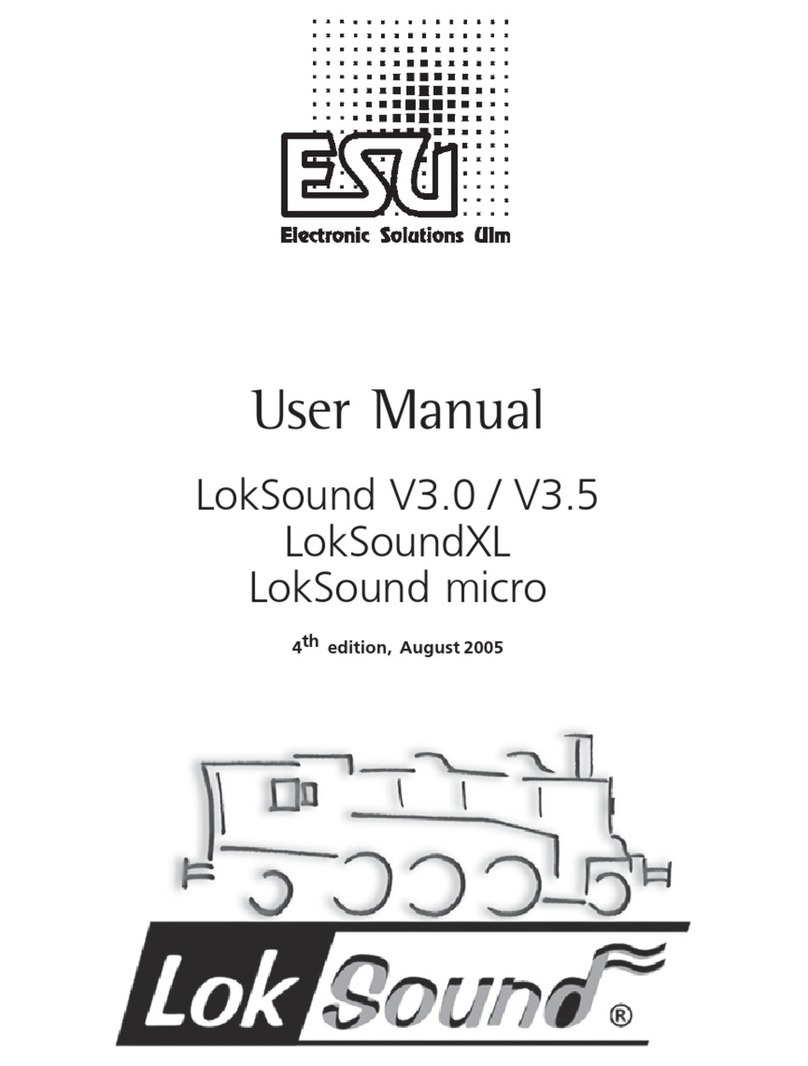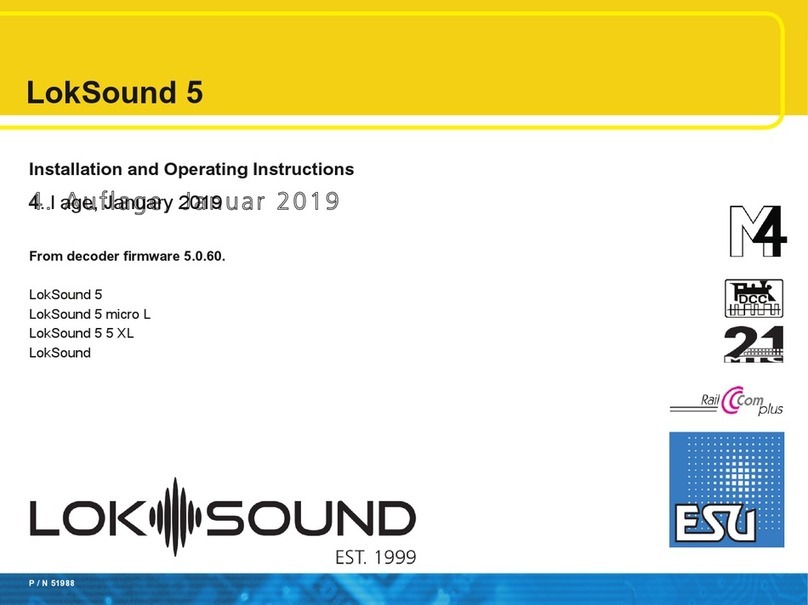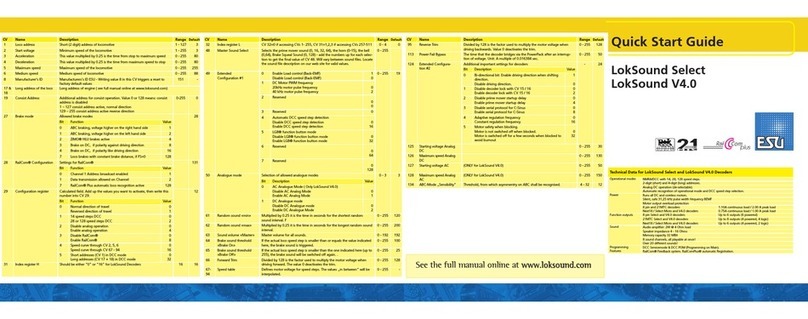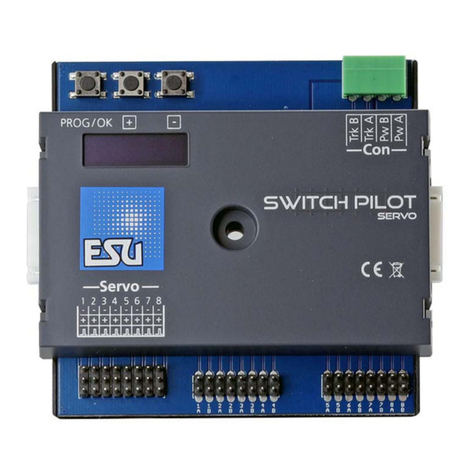4user manual LokSound / LokSoundXL V3, 1st edition, 07/2004
2. Characteristics of the LokSound decodersCharacteristics of the LokSound decoders
Characteristics of the LokSound decodersCharacteristics of the LokSound decoders
Characteristics of the LokSound decoders
The LokSound decoder is a universal electronic module
for installation in model engines of most common
scales. We recommend LokSound for all engines in TT,
HO gauge as well as smaller engines in O gauge.
LokSoundXL is best suited for larger scales such as O,
I, II and G gauge. ESU LokSound decoders
revolutionize any model train layout. They intelligently
combine a sophisticated digital decoder and a digital
sound module. With LokSound you can run your
engine with load control and many auxiliary functions
while enjoying the original sound of the prototype.
Its unique features provide flexibility and safety in
operation that you have come to expect from a state-
of-the-art decoder. Even future standards are no
problem for LokSound: its flash technology allows
adaptation to the latest developments.
Multi-protocol operation: LokSound decoders und-
erstand both, the commonly used Märklin® /
Motorola® – format and the NMRA / DCC - system.
Thus LokSound may be used with almost all currently
available digital command control systems. Amongst
others LokSound was tested with:
• Arnold Digital® (DCC system)
• Lenz Digital Plus®
• ROCO® digital is cool®
• Märklin® 6021
• Uhlenbrock® Intellibox (DCC+ Motorola® system)
• ZIMO MX-1 (DCC-Betrieb)
• Fleischmann® Twin-Center
• LGB MZS Steuerung
Automatic change between all four operating modes
during operation (AC analogue, DC analogue, DCC
digital, Märklin® digital)
Universal motor connection: All types of motors
commonly used for model trains may be connected
to LokSound:
• DC motors (e.g. Bühler, Mabuchi)
• Coreless motors (e.g. Faulhaber, Maxxon)
• Alternating current
High motor pulse frequency: The pulse frequency of
32 kHz (!) assures absolutely smooth running. Thus
the motor runs silently and without any whine, heat
generation is minimized and lifetime is prolonged. Even
coreless motors may be operated with LokSound
decoders without any problem.
Characteristics of the LokSound decodersCharacteristics of the LokSound decoders
Characteristics of the LokSound decodersCharacteristics of the LokSound decoders
Characteristics of the LokSound decoders
Motor control: LokSound offers fourth generation
load control. It may be adapted to suit each individual
motor and can be switched off. Suitable for DC motors
and coreless motors. Therefor your engine will always
travel at the selected speed, no matter how large the
load is or whether the engine is traveling up or down
gradients.
4 function outputs: In addition to the two lighting
outputs, two more function outputs are available:
switch on a smoke generator or the interior lighting
or activate a digital coupler by pressing a button!
Lighting effects and individually dimmable lamps help
to make your models even more prototypical and you
will have lots of fun.
Brake sections: LokSound decoders recognize (and
respond to) the most common brake systems: besides
the Lenz brake generator, the Märklin® brake track
is also supported.
Circuit protection: the motor output and all function
outputs are protected against short circuit.
Please make sure that the total current does not
exceed the maximum permitted current for the
function outputs and avoid short circuits
between the outputs: LokSound circuits are
protected, but an external voltage at the terminals
of a function output may destroy the circuitry.
Analogue operation: LokSound decoders may be
operated on AC- and DC layouts without any problems.
Easy programming: Even with Märklin® 6021 all
functions may be changed comfortably without
opening the engine.
A digital, four-tone sound module with unique
characteristics:
Prototype sounds: sounds of prototype engines were
sampled using high fidelity microphones and recorded
digitally on the flash memory module. Thus your
engines sound exactly like the prototype!
With four independent channels your engine sounds
even more realistic since you can simultaneously add
3 sound effects to the running sound. Pumps, power
switches and squealing brakes can all be heard at the
same time. The exhaust chuffs of steam engines vary
with the revs of the drivers and the load. Now you
can really hear your engine work. Diesel engines can
now simulate the reduced revs of the diesel while the
engine is coasting. The running sound and the sound





















